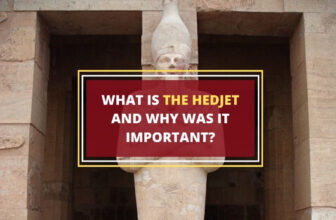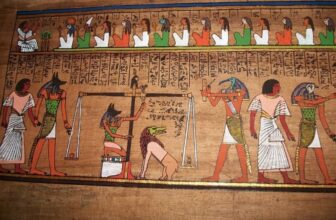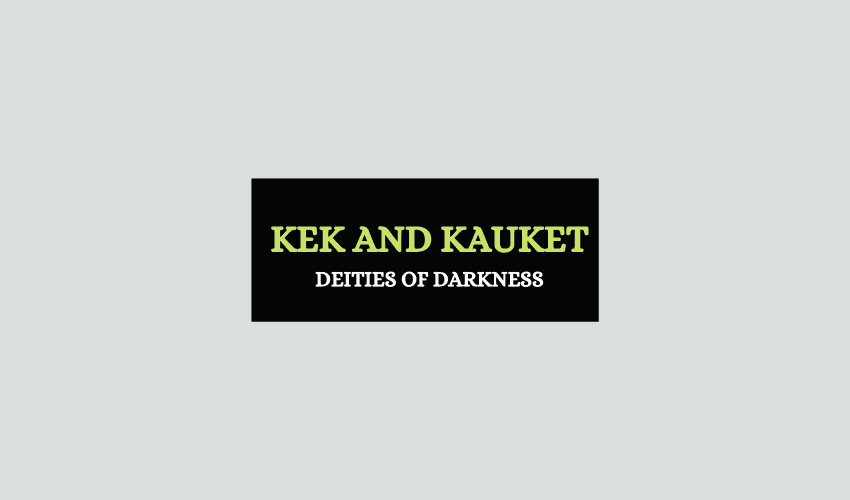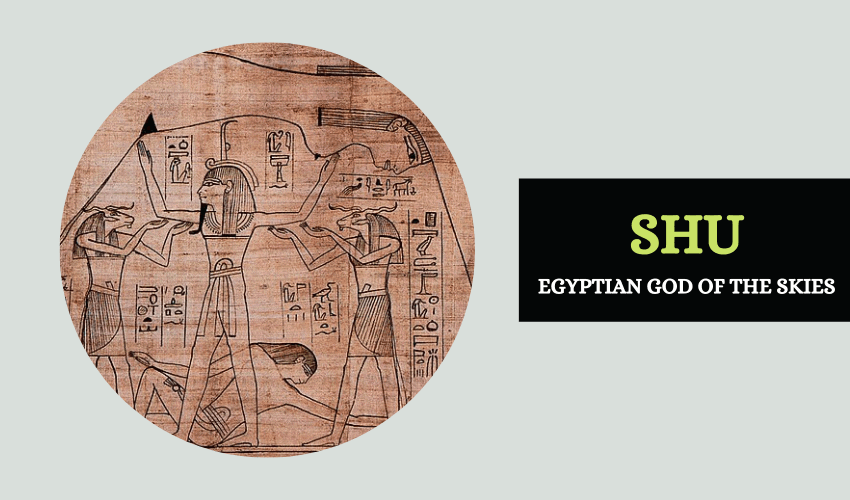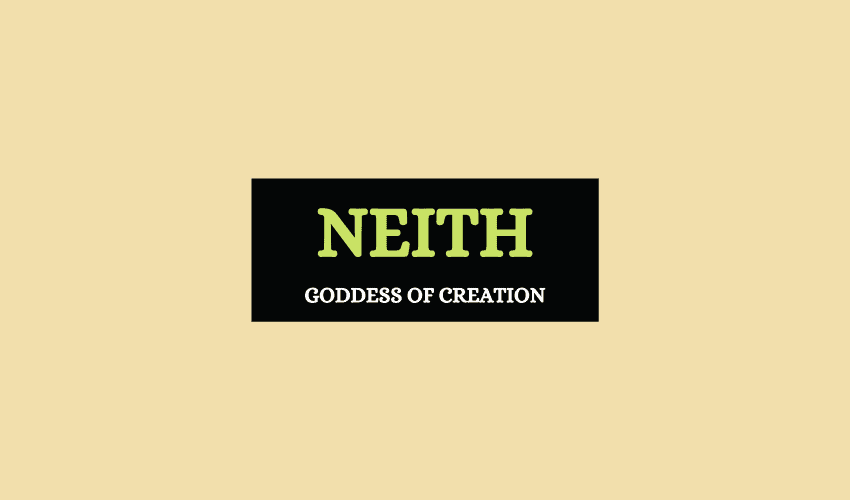
Table of Contents
Neith was one of the oldest deities of the Egyptian pantheon, known as the goddess of creation. She’s also the goddess of domestic arts and war, but these are just some of her many roles. Neith was mostly known for being the creator of the universe with everything in it and for possessing the power to control the way it functions.
Here’s the story of one of the most powerful and complex deities in Egyptian mythology.
Who Was Neith?
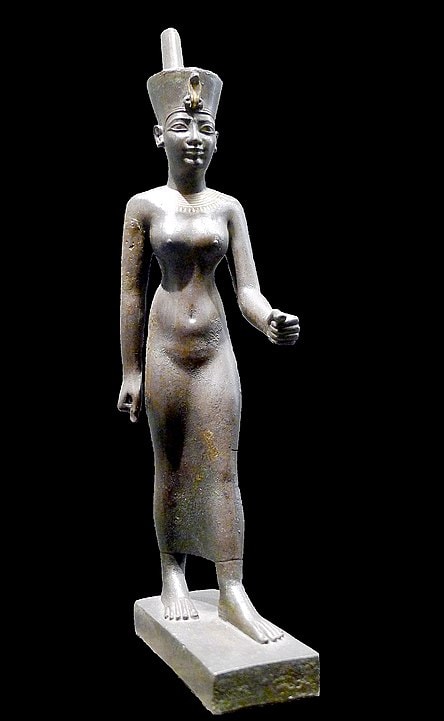
Neith, known as the ‘First One’, was a primordial goddess who simply came into existence. According to some sources, she was entirely self-generated. Her name is spelled in various ways including Net, Nit and Neit and all these names carry the meaning ‘the terrifying one’ because of her immense strength and power. She was also given several titles such as ‘Mother Of The Gods’, ‘The Great Goddess’ or ‘Grandmother Of The Gods’.
According to the ancient sources Neith had many children including the following:
- Ra – the god who created everything else. The story goes that he took over from where his mother had stopped and completed creation.
- Isis – the goddess of the moon, life and magic
- Horus – the falcon-headed god
- Osiris – the god of the dead, resurrection and life
- Sobek – the crocodile god
- Apep – some myths suggest that Neith might have created Apep, the serpent, by spitting into the waters of Nun. Apep later became Ra’s enemy.
These were only a few of Neith’s children but legend has it that she had many others. Although she bore or created children, she was thought to be a virgin for eternity who had the power to procreate without any male assistance. However, some late myths have her as the wife of Sobek instead of his mother, while in others she was the wife of Khnum, the Upper Egyptian god of fertility.
Depictions and Symbols of Neith
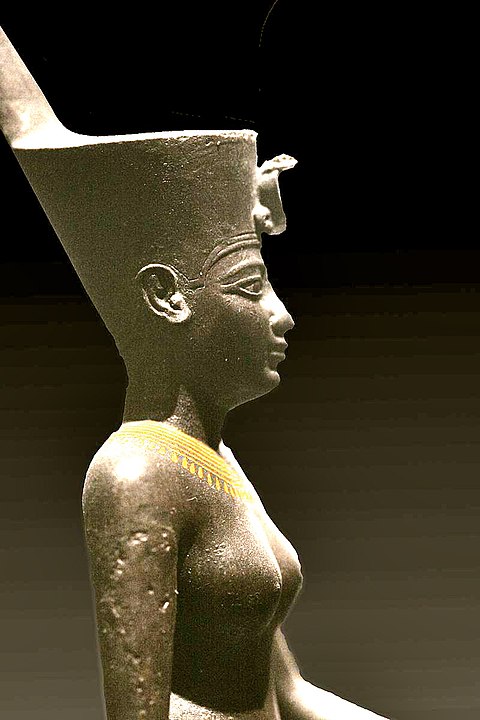
Although Neith was said to be a female goddess, she mostly appears as an androgynous deity. Since she played many roles, she was depicted in many different ways. However, she was typically represented as a woman holding the was scepter (which signified power), the Ankh (a symbol of life) or two arrows (associating her with hunting and war). She was also often seen wearing the crown of Lower and Upper Egypt, symbolizing the unity of Egypt and power over all of the region.
In Upper Egypt, Neith was portrayed as a woman with a lioness’ head, which was symbolic of her power and strength. When appearing as a woman, her hands and face were usually green. At times, she was depicted in this way with a baby crocodile (or two) suckling at her breast, which gained her the title ‘Nurse of Crocodiles’.
Neith is also associated with cows, and when depicted in the form of a cow, she’s identified with Hathor and Nut. She’s sometimes called the Cow of Heaven, which reinforces her symbolism as a creator and nurturer.
The first known emblem of Neith consists of two crossed arrows mounted on a pole. In later Egyptian art, this symbol can be seen placed on top of her head. Another less well-known symbol was the bow case, and sometimes she would wear two bows on her head in place of a crown. She was strongly associated with these symbols during the predynastic period when she played an important role as the goddess of war and hunting.
Neith’s Role in Egyptian Mythology
In Egyptian mythology, Neith played numerous roles, but her main role was the creator of the universe. She was also the goddess of weaving, mothers, the cosmos, wisdom, water, rivers, hunting, war, fate and childbirth, to name a few. She presided over crafts such as warcraft and witchcraft and seemed to favor weavers, soldiers, artisans and hunters. The Egyptians often invoked her aid and her blessings on their weapons when going to battle or hunting. Neith also often participated in wars due to which she was called ‘Mistress of the Bow, Ruler of Arrows’.
In addition to all her other roles, Neith was also a funerary goddess. Just like she gave life to humanity, she was also present at the death of a person to help them adjust to the afterlife. She would dress the dead in woven cloth and protect them by shooting arrows at their enemies. During the early dynastic times, weapons were placed in tombs to protect the dead from evil spirits and it was Neith who blessed those weapons.
Neith also guarded the pharaoh’s funerary bier together with the goddess Isis and was responsible for weaving the mummy wrappings. The people believed that these mummy wrappings were her gifts and they called them ‘the gifts of Neith’. Neith was a wise and fair judge of the dead and played an important part in the afterlife. She was also one of the four goddesses, along with Nephthys, Isis and Serqet, who were responsible for guarding the deceased, the four sons of Horus, as well as the canopic jars.
Like many of the Egyptian deities, Neith’s roles gradually evolved through history. During the New Kingdom, her role as a funerary goddess especially associated with hunting and war became very evident.
According to the Contendings of Horus and Seth, it was Neith who came up with a solution as to who should become the king of Egypt after Osiris. Her suggestion was that Horus, the son of Osiris and Isis, should succeed his father since he was the rightful heir to the throne. While the majority agreed with her, Seth, the god of deserts, wasn’t happy about the arrangement. However, Neith compensated him by allowing him to have two Semitic goddesses for himself, to which he finally agreed and so the matter was solved. Neith was often the one that everyone, humans or gods, came to whenever they needed to solve any conflicts.
As the goddess of domestic arts and weaving, Neith was also a protector of marriage and women. The people believed that every day, she would reweave the entire world on her loom, arranging it to her liking and fixing whatever she thought was wrong with it.
Cult and Worship of Neith
Neith was worshipped throughout Egypt, but her main cult center was in the Sais, the capital city during the Late Dynastic Period, where a large temple was built and dedicated to her in the 26th Dynasty. Her symbol, the shield with the crossed arrows became the emblem of Sais. Neith’s clergy were females and according to Herodotus, her temple was one of the largest and most impressive temples ever built in Egypt.
The people who visited Neith’s temple in Sais weren’t allowed to enter it. They were only allowed in the outer courtyards where a huge, artificial lake was built, and here they worshipped her daily with lantern parades and sacrifices, asking for her aid or thanking her for having given it.
Every year, the people celebrated a festival known as the ‘Feast of the Lamps’ in honor of the goddess Neith. People came from all corners of Egypt to pay her their respects, pray and present their offerings to her. Those who didn’t attend lit lamps in other temples, in the palaces, or in their homes, keeping them lit all night long without allowing them to die out. It was a beautiful sight since all of Egypt was lit up with colorful lights in celebration. This was regarded as one of the most important festivals in ancient Egypt that was celebrated in the honor of a deity.
Neith was so prominent in Predynastic and Early Dynastic times, that at least two queens took her name: Merneith and Neithhotep. The latter may have been the wife of Narmer, the first Pharaoh, although it is more probable that she was a queen to king Aha.
Facts About Neith
Neith was the mother goddess of war, weaving, hunting, water, and several other domains. She is one of the oldest gods of the Egyptian pantheon.
Neith is derived from the ancient Egyptian word for water.
Neith’s most prominent symbols are crossed arrows and a bow, as well as a bow case.
In Brief
As the oldest of all Egyptian deities, Neith was an intelligent and just goddess who played a significant role in the affairs of the mortals and the gods as well as in the Underworld. She maintained the cosmic balance by creating life while always being present in the afterlife, helping the dead to move on. She remains one of the most important and respected deities in Egyptian mythology.




